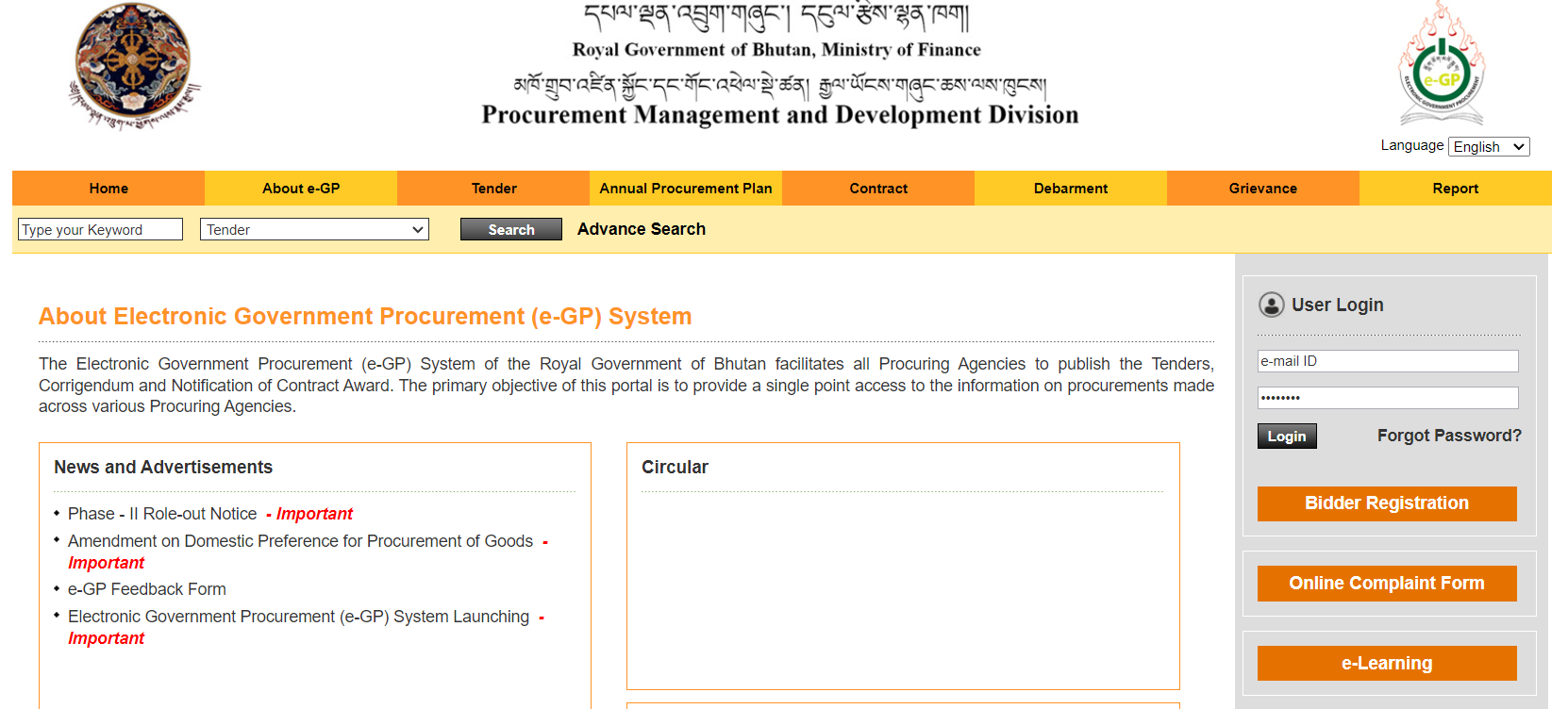Bhutan has been making significant strides in digital transformation, and one of its notable achievements has been the successful implementation of the e-Government Procurement (e-GP) system. The first two phases of the e-GP system were launched in June 2017 and July 2020, respectively. These phases covered various modules, ranging from the creation of Annual Procurement Plans to the Contract Award stage. Additionally, the system incorporated a Grievance Redressal System to ensure transparency and accountability. As a result, 10 Ministries, 20 Dzongkhags, 60 Autonomous Agencies, 14 Dungkhags, 5 Regional Offices of the Department of Roads, and 23 Gewogs have embraced the system.
Now, Bhutan is poised to take procurement to new heights with the introduction of the much-anticipated Phase 3 of e-GP, which is expected to bring several advancements and improvements to the country’s procurement ecosystem. On July 06, 2023, we celebrate the momentous occasion of the launch of e-GP Bhutan Phase 3 as the nation enters a new era of procurement excellence.
With Phase 3 now live, let’s delve into the modules and advancements introduced in this latest phase and explore how they might impact Bhutan’s procurement system.
Phase 3 Launch
After months of dedication and hard work, the eagerly awaited e-GP Bhutan Phase 3 went live on July 06, 2023. During the six-month piloting and capacity building phase, the team meticulously refined and enhanced the system to ensure its readiness for a seamless transition.
Modules in Phase 3:
The latest phase introduces a range of modules designed to elevate Bhutan’s procurement system to new heights:
Development of Supply Order Module: Enables efficient procurement of goods and services through streamlined supply order processes, enhancing collaboration between procuring agencies and suppliers.
Non-Consulting Services and Reporting on Community Contracting: Accommodates non-consulting services and offers improved reporting capabilities for community contracting projects, ensuring greater oversight and compliance.
e-Reverse Auction: Revolutionizes the bidding process by introducing dynamic and competitive e-reverse auctions, allowing real-time participation and driving cost-effective procurement outcomes.
Preparation of e-Invoice and Integration with e-Payment Module: Facilitates smoother e-invoice preparation and integration with the e-PEMS (Electronic Public Expenditure Management System) for timely and accurate payments.
Contract Management for Goods, Works, and Services: Strengthens contract management, enabling better oversight, amendments, terminations, and overall project execution efficiency.
Procurement under Development Partner-Financed Projects: Addresses the specific requirements of projects financed by development partners, ensuring efficient procurement and project management.
Reporting Enhancement: Enhances existing reports, providing stakeholders with real-time insights into procurement statistics, tender participation, and community contracting information.
Embracing Microservice Architecture
The introduction of microservice architecture is one of the most significant developments in Phase 3. Microservices, as opposed to the traditional monolithic architecture, provide unique benefits such as increased scalability, flexibility, and fault tolerance. This shift enables the e-GP system to handle growing user demand, optimise resource utilisation, and prevent potential problems caused by isolated service outages.
Impact on the Procurement System:
The launch of e-GP Bhutan Phase 3 and the adoption of microservice architecture promise far-reaching impacts on the nation’s procurement system:
Superior User Experience: Microservice architecture ensures seamless interactions, enhancing user experience and overall satisfaction throughout the procurement process.
Real-time Data Insights: Improved reporting capabilities provide stakeholders with real-time data and analytics, enabling data-driven decision-making and process optimization.
Streamlined Procurement Cycles: The e-Reverse Auction and other enhanced modules expedite procurement cycles, minimizing delays and maximizing resource efficiency.
Transparency and Accountability: With heightened transparency and detailed reporting features, the system promotes accountability, integrity, and public trust in the procurement process.
DohaTec’s Pivotal Role
The successful launch of e-GP Bhutan Phase 3 owes much to the expertise and dedication of DohaTec, the development Lead Consultant. Their team’s role in designing and implementing the microservice architecture, enhancing modules, and ensuring a smooth transition has been invaluable. With a comprehensive risk management methodology, DohaTec has effectively addressed potential challenges and contributed to a successful launch.
As Bhutan marks the landmark achievement of e-GP Bhutan Phase 3, the nation stands at the forefront of procurement modernization. Microservice architecture and innovative modules herald a new era of efficiency, transparency, and effectiveness in public procurement. The collaborative efforts of the e-GP Bhutan team and DohaTec serve as a shining example for nations seeking to harness technology to elevate their procurement processes. With the successful launch of Phase 3, Bhutan has firmly established itself as a trailblazer in digital transformation and public service excellence.

These are some of the essential values that can lead to success: hard work, dedication, motivation, honesty, and commitment.